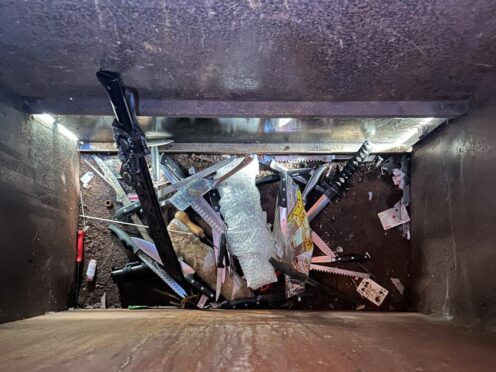Richard Tice, chairman and former leader of Reform UK, took part in a seven-way debate on Channel 4, broadcast on June 18, themed around immigration and law and order.
Around 11 minutes into the programme, Mr Tice addressed Conservative minister Chris Philp, telling him: “Since you’ve been in charge, the population has increased by about six million, knife crime has almost tripled.”
Evaluation
The claim about the size of the British population is largely borne out by official statistics, which show a rise of nearly five million from 62.8 million in 2010 to 67.6 million in mid-2022. With a net migration figure of 685,000 across 2023 as well, this is justifiably “almost six million”.
The statement about knife crime is less straightforward. Data from the Office for National Statistics show that knife crime has risen since 2010 by about a third. These statistics reflect violent crimes committed with knives or similar weapons, and show that the number has also reduced from a peak in 2019/20.
The facts
The simple term “knife crime” could cover a variety of criminal offences — from a homicide by stabbing to possession of a bladed article in a public place (as outlined in the Criminal Justice Act 1988). It is also not limited to knives, with the Office for National Statistics collating police force data on offences involving knives and sharp instruments, in what it currently labels “knife-enabled crime”.
Mr Tice’s claim is based around the Conservatives’ record in government, with a later remark about “the last 14 years” putting this definitively as 2010, the start of David Cameron’s coalition government with the Liberal Democrats (as opposed to the Conservative majority Mr Cameron won in 2015). The ONS figures date back to the year ending March 2011, “the earliest point for which comparable data are available”.
For the year ending March 2011, which encompasses the start of the Tory government, 36,068 violent and sexual offences involving a knife or sharp instrument were recorded. By counting violent crimes, this excludes crimes of possession but includes homicide, attempted murder, threats to kill, assault, robbery, rape and sexual assault. The most recent number, which records the year ending December 2023, show 49,489 such crimes. This is a rise of 13,781 – slightly over a third as high, but certainly not tripled (which would be 108,204).
The most recent number does come with a couple of caveats. Firstly, due to an IT issue, Devon and Cornwall Police was unable to contribute figures between October 2022 and December 2023.
Greater Manchester Police’s (GMP) numbers are absent for a similar reason. But in addition to this, the ONS cautions against including any of GMP’s figures going back to 2010 due to historic under-counting. To adjust the March 2011 figure by taking out GMP crimes, for a more comparable number, there would be a total of 34,020 of these selected offences.
These statistics also show that knife crime at its peak reached 55,170 incidents (or 51,982 if GMP is excluded) between April 2019 and March 2020. The lowest level recorded came in the year ending March 2014, at 28,337 (or 26,694 excluding GMP). That means that knife crime did almost double during select years of Conservative governance.
Using the GMP-excluded numbers across the whole available span, the rate of these knife crimes per million has risen from 642 to 891.
Reform UK has been contacted for comment.
Links
YouTube: UK Election Debate – Immigration, Law and Order [Channel 4 News]
United Kingdom population mid-year estimate – Office for National Statistics (archived)
Reducing Net Migration Factsheet – May 2024 – Home Office in the media (archived)
Criminal Justice Act 1988, Part XI, Section 139 – legislation.gov.uk (archived)
Crime in England and Wales – Office for National Statistics (archived)
The nature of violent crime in England and Wales – Office for National Statistics (archived)
Crime in England and Wales: Other related tables – Office for National Statistics (archived page and spreadsheet)
